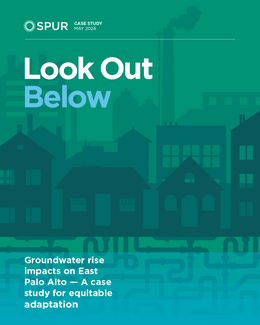As Bay Area policymakers plan for the impacts of sea level rise, they have an opportunity and a duty to address another emerging climate change hazard: groundwater rise. Without adaptation measures, groundwater rise in the Bay Area’s low-lying communities will increase inland flood risks , damage belowground infrastructure, mobilize contaminants at legacy industrial sites, and increase the risk of building collapse in the event of an earthquake.
SPUR partnered with community-based organization Nuestra Casa to explore how rising groundwater is likely to affect one Bay Area city: East Palo Alto. Our case study found that groundwater rise will exacerbate existing vulnerabilities in East Palo Alto caused by proximity and exposure to contaminated sites, existing flood exposure, aging infrastructure, and small privately-owned utility providers –– vulnerabilities common to other low-lying and low-income Bay shore communities. Efforts to lessen those impacts should be part of state, regional, and local plans to deal with sea level rise, and adaptation strategies need to be equity-focused and developed in partnership with communities that will likely be impacted first and most. SPUR and Nuestra Casa have developed recommendations for policymakers to begin to address the risks of groundwater rise in East Palo Alto and San Mateo County. Many of these recommendations can be applied to other vulnerable communities along the San Francisco Bay shore.
